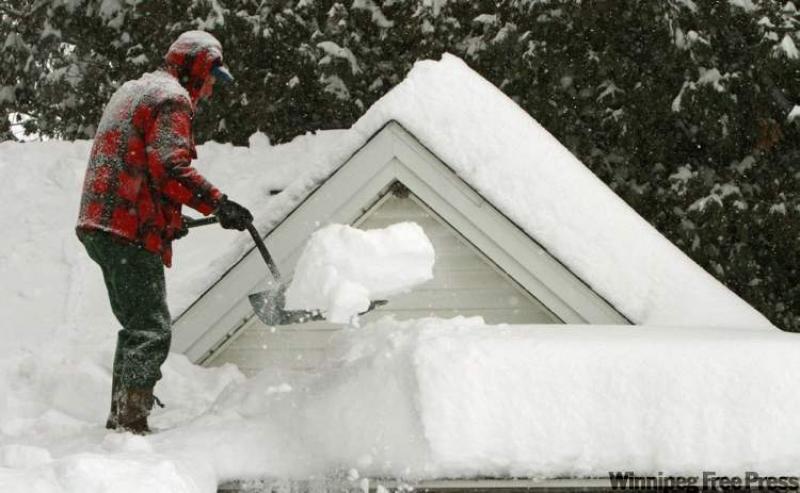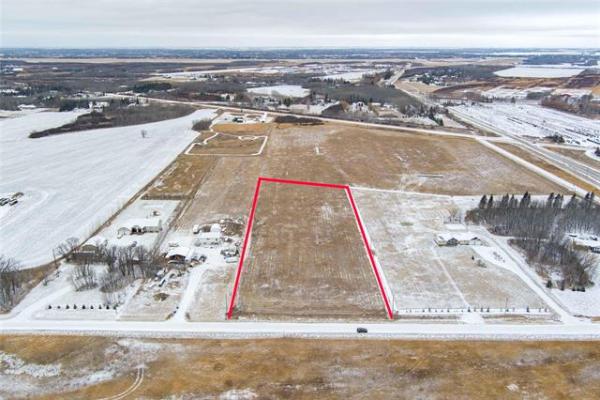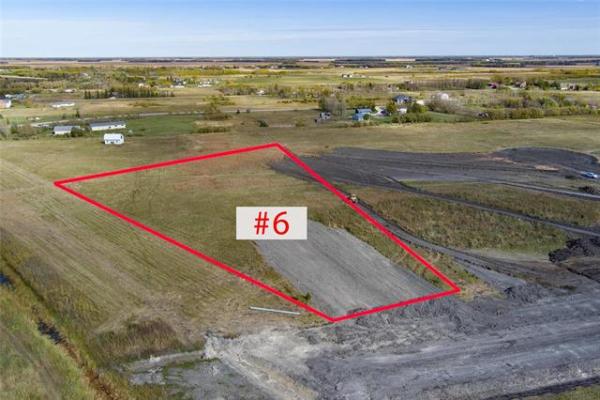QUESTION: I just wanted to contact you for your opinion on the removal of snow from roofs. Since we have a relatively low pitch and quite a lot of snow, is it recommended we remove snow from our rooftop? Thank you for your help. Jeff Braun
ANSWER: A question as straightforward as yours deserves an equally concise answer. Yes, you should definitely consider removal of snow from your roof this winter. Unfortunately, I would not give you the same answer every winter, as environmental factors will have considerable bearing on this issue.
Anyone who has looked out the window in the central Prairies this winter, particularly the Red River Valley, will share your concerns over the volume of snow that has fallen. This is further echoed by daily media and government reports warning of possible overland flooding this spring, due to recent precipitation.
You are wise to concern yourself with the heavy load of snow on your roof and should hire a properly insured contractor to remove the majority of this before the weather warms too much. If you are fit enough and take the proper safety precautions, you could also do the work yourself. If you live in a bungalow, you could also remove a considerable volume of snow near the eaves with a plastic roof rake without climbing on the roof itself.
Part of the reason why snow removal is important this year is not only the volume of snow that has fallen, but the amount that has remained on many rooftops relative to other years. I think this is due to the numerous small to moderate amounts of snowfall we have received since last October, but other factors such as wind and the freeze-thaw cycle may also have contributed.
I have witnessed many homes with large drifts of snow overhanging eaves, where this normally would not occur. This snow should be removed to prevent the formation of icicles or small avalanches that may occur if the weather warms quickly. If not removed, these areas may become a significant safety hazard for anyone walking underneath on a warm March day.
The main reason to remove the snow from your roof is to prevent excessive stress on your roof system from the thick snow. When the snow falls in the dead of winter it may create a fluffy, low-density covering that is relatively evenly distributed over your roof. This snow may contain relatively low moisture content by volume due to the cold, dry conditions common on many mid-winter days in our area. As the weather warms, the snow will compact and become much denser and heavier. This will be compounded by melting of the snow on the upper part of the roof, which may increase the volume of wet snow at the eaves and valleys. High winds can also contribute to uneven concentrations in certain areas of your roof, as the snow may blow off the peaks and land in the already packed valleys.
Because your roof has a relatively low pitch, chances of large amounts of snow tumbling off on sunny days are unlikely, but the lack of slope will make it more susceptible to snow buildup and physical stress. Steeply pitched roofs are less likely to have sagging rafters because of the inherent strength of the triangular design. They will normally retain less snow as well, because it will be more prone to blowing off a steep roof than a flatter one. For this reason alone, removal of the snow is highly recommended for your house.
To explore the other side of the coin, I can think of only a couple of reasons why you would not want to clear your roof of excessive snow before the big melt. The first is to prevent damage to the roofing. Snow may have minimal negative effects on a properly designed roof system, but it may provide some beneficial protection from the harmful rays of the sun during the winter. Because many homes are roofed with dark-coloured asphalt shingles, for aesthetic reasons, they are more susceptible to premature wear from ultraviolet radiation.
As we all learned in elementary school science class, dark colours absorb light and heat and light colours reflect them in an opposite manner. For this reason, a good layer of bright, white snow on a dark-shingled roof will help reflect much of the sun's radiation, keeping the roof cool on sunny winter days. This may help prolong the life of the shingles, as overheating is one of the major causes of shingle wear.
As well, removal of snow by improper methods can cause physical damage to the roofing. Using metal shovels or shovelling and scraping in the wrong direction can remove excessive granular material from the shingles or actual pieces of the roofing. For this reason, care must be taken to use only plastic implements and to always shovel from the peak downward.
The final concern with snow removal from your roof is danger to the individuals doing the work. Falls are one of the largest causes of personal injuries seen by the medical community. Standing on a wet, slippery roof well above the ground is an ideal environment for such an accident. Anyone attempting such a job should wear a properly secured safety harness and any workers hired should be covered by proper disability insurance and professional liability insurance in case of an accident.
If all these issues are properly addressed, getting rid of the excess snow from your roof before it melts is advisable.
Ari Marantz is the owner of Trained Eye Home Inspection Ltd. and the President of the Canadian Association of Home & Property Inspectors-Manitoba (www.cahpi.mb.ca). Questions can be emailed to the address below. Ari can be reached at (204) 291-5358 or check out his website at www.trainedeye.ca.
trainedeye@iname.com




